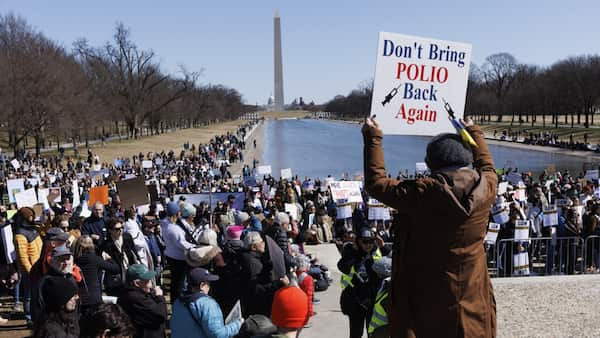Key Points
- Robert F Kennedy Jr has announced plans to reshape the US public health agencies.
- The jobs cuts combined with recent voluntary resignations reduce staff numbers by around 20,000.
- The announcement is the latest in a series of restructuring plans in the federal workforce.
United States secretary of health and human services (HHS) Robert F Kennedy Jr has announced plans to reshape federal public health agencies, including cutting 10,000 employees and centralising some functions of the Food and Drug Administration (FDA), Centers for Disease Control and Prevention (CDC) and others under his control.
The job cuts include 3,500 at the FDA, 2,400 at the CDC, and 1,200 at the National Institutes of Health (NIH).
The latest job cuts, and about 10,000 recent voluntary departures, will reduce the number of full-time HHS employees to 62,000 from 82,000, the department said.
"Over time, bureaucracies like HHS become wasteful and inefficient even when most of their staff are dedicated and competent civil servants," Kennedy said in a statement.
US President Donald Trump and billionaire ally Elon Musk, who oversees the Department of Government Efficiency cost-cutting initiative, have been as part of an effort to shrink the federal bureaucracy.
LISTEN TO

'Intention to cause chaos': How Elon Musk is reshaping the US government
SBS News
13:22
Large government agencies like HHS sprawl over time, and there is merit in reorganising them, which has happened under both Democratic and Republican administrations, but this plan goes beyond that, said Larry Levitt, executive vice president for health policy at non-profit Kaiser Family Foundation.
"This is not just a reorganisation of HHS. It is also a slashing of the federal workforce, which will ultimately affect government services," said Levitt, a former senior adviser to the White House and HHS under former president Bill Clinton.
The planned FDA job cuts would not affect inspectors or reviewers of drugs, medical devices, or food, HHS said.
The terminations are likely to delay drug and medical device application reviews or cause missed deadlines, said Eva Temkin, a lawyer at Arnold & Porter who advises clients on drug and medical device applications.
"There's a real risk that this results in delayed patient access to treatments," she said.
The Administration for Strategic Preparedness and Response, currently an independent HHS agency with 1,000 employees, will be folded into the CDC.
The NIH will see staff reductions across its 27 institutes and centres.
The Centers for Medicare and Medicaid Services was comparatively spared with a reduction of about 300 employees. It was not immediately clear from which HHS divisions or offices the remaining 2,600 cuts would come.
As part of the restructuring, the department's 10 regional offices will be cut to five and its 28 divisions consolidated into 15, including a new Administration for a Healthy America, or AHA.
The changes centralise functions such as communications, human resources, IT, and policy planning that currently spread out across several health agencies, including the FDA, CDC, and NIH. Agencies report to the health secretary but have traditionally operated somewhat independently of HHS and the White House.
There are no additional cuts currently planned, the department said.


